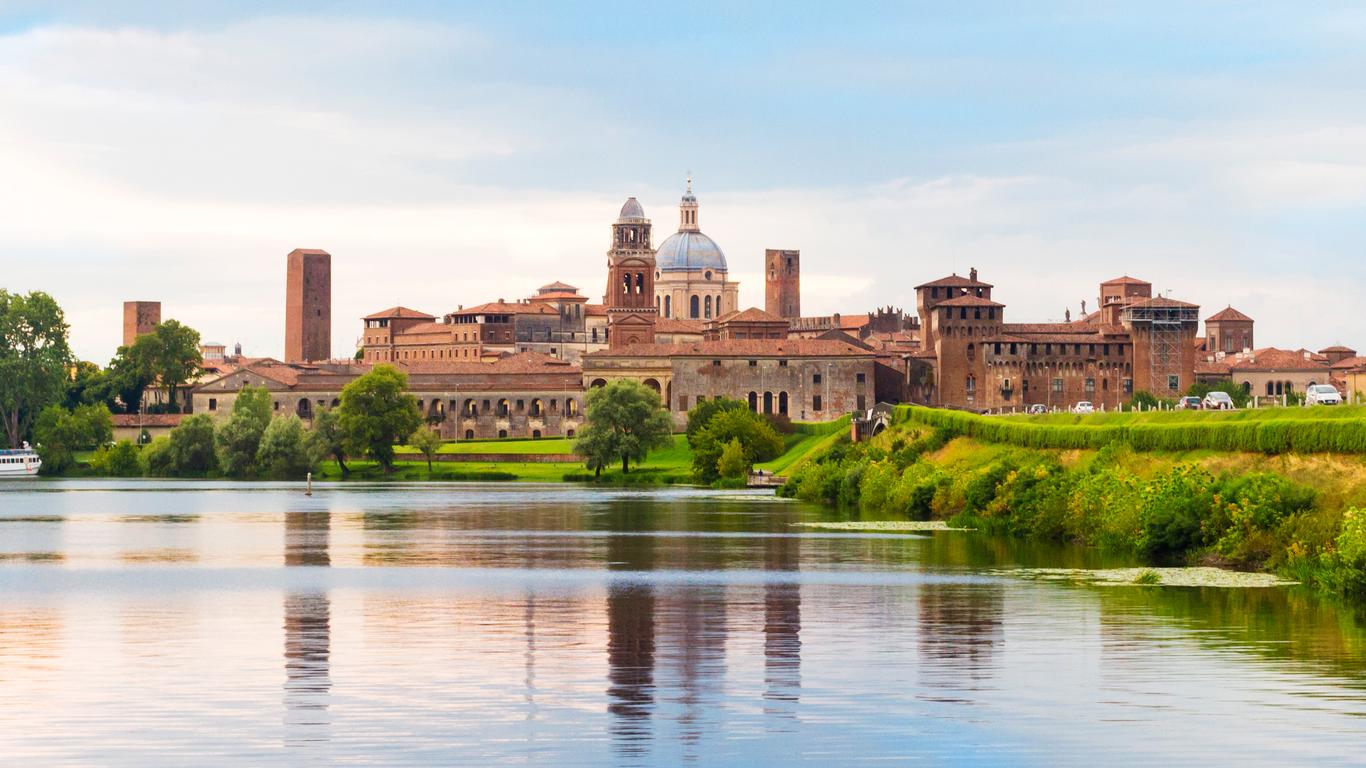With an old town centre awarded UNESCO World Heritage status and named the Italian Capital of Culture in 2016, Mantua is a beautiful and celebrated city in the region of Lombardy in northern Italy. It lies between Venice and Milan, not far from the city of Verona, and offers quintessential Italian culture as well as a rich display of heritage through its vibrant streets and many tourist attractions. The city is surrounded by artificial lakes, giving it a sense of peaceful isolation, and contains a timeless Renaissance atmosphere in its architecture and landscape, making it an elegant cultural hub of Italy.
Many beautiful buildings were preserved in Mantua, meaning it is full of quintessential Italian architecture and local landmarks such as the Palazzo del Te, a wealthy residential villa designed by Giulio Romano and the 15th Century Basilica of Sant’Andrea. Another impressive monument is the Palazzo Ducale, the old residence of the Gonzaga family, which visitors can explore and discover the landscaped gardens and courtyards as well as intricately frescoed rooms. As well as sightsee, visitors can try the delicious local cuisine, particularly famous for its donkey stew, relax in the Italian bars of hidden squares, rent a scooter to explore the city like a local, or sail on the waters of the magnificent lakes in Mantua. The city contains numerous stunning churches like the church of Santa Paola or the church of Santa Maria del Gradaro, both of which date back hundreds of years, or visitors can attend a show at the Bibiena Theatre, where Mozart one performed.
Visitors can travel into Mantua via the Valerio Catullo Airport in Verona, which is less than a 30-minute drive from the city. There is a direct train service from Verona and regular routes throughout Italy to cities like Milan, Venice and Trento. Local buses travel from the city itself, although visitors can also navigate the smaller streets by foot.
The history of Mantua dates back to 2000 BC when an island settlement developed and was taken by the Romans until its Empire fell in the 5th Century AD. The house of Gonzaga renovated the city in the 1500s and embraced the culture of the Italian Renaissance, allowing for much of its famous architecture. Mantua survived numerous war times, including the Napoleonic Wars and rule of the Austrian Army, eventually becoming part of the independent Kingdom of Italy in the 19th Century.





